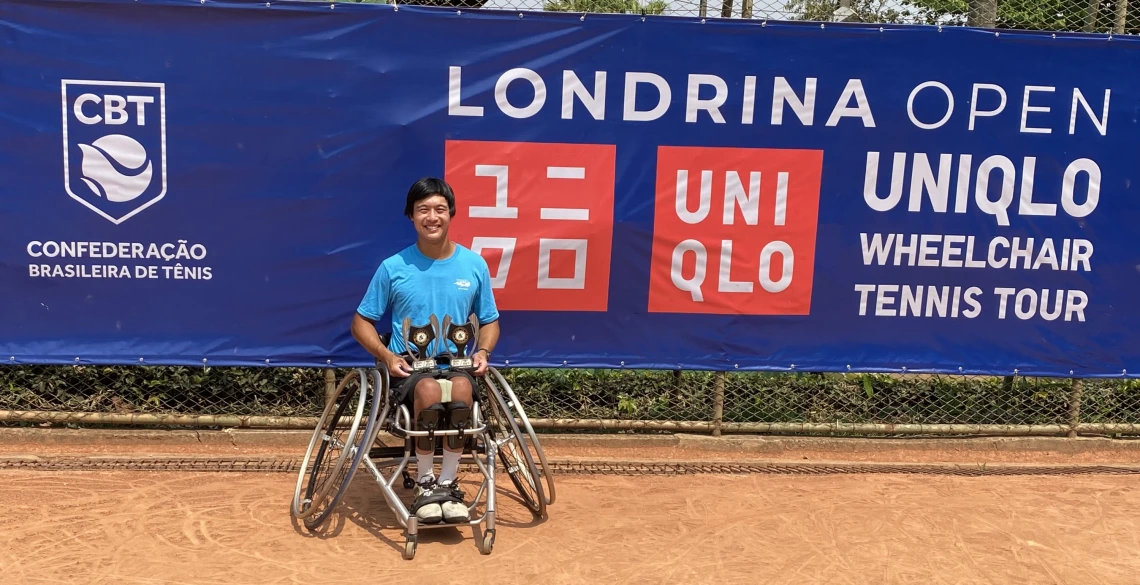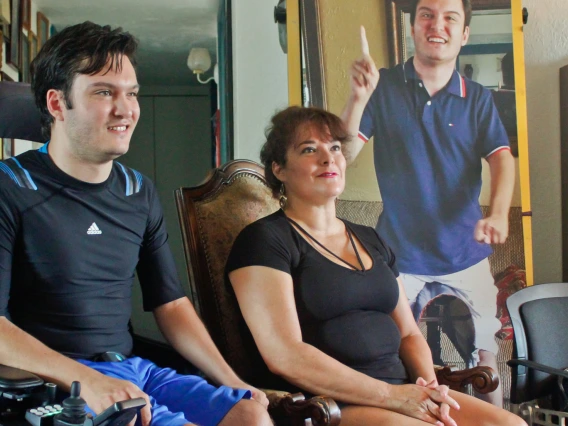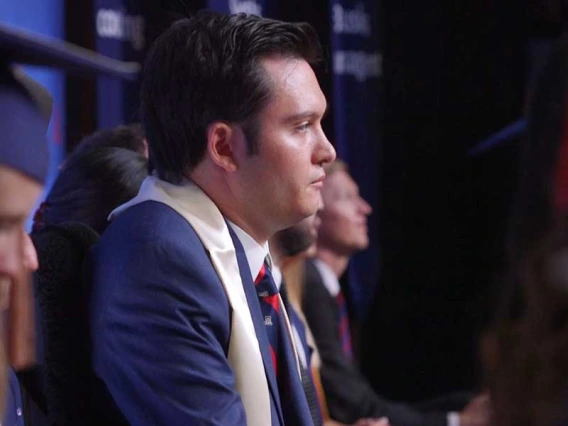Q&A: Alum Climbs World Rankings in Wheelchair Tennis
Jason Keatseangsilp, who earned his biomedical engineering degree in 2017, is ranked No. 2 nationally in men’s wheelchair tennis singles – and approaching the top 50 globally, out of ~500 ranked players. Now he is contemplating the possibility of...

Alum Jason Keatseangsilp, a globally ranked wheelchair tennis player, in Brazil for the Wheelchair Tennis Tour
An avid tennis player growing up, Jason Keatseangsilp injured his spinal cord in a rappelling accident his senior year of high school and began using a wheelchair. After his rehabilitation, he went on to earn a biomedical engineering degree from the University of Arizona in 2017.
He dabbled in wheelchair tennis as a hobby during his college years, then began pursuing the sport competitively after graduation, starting to play for Team USA in 2018. Now, he’s ranked the No. 2 wheelchair tennis player in the United States and No. 55 in the world in singles.
How did you get started in wheelchair tennis?
Tennis has always been a lifelong passion, but I played seldom in college because my studies were top priority. The University of Arizona wheelchair tennis coach, Bryan Barten, as well as some other Tucson community members, helped me get back into the sport. Now, I have been playing wheelchair tennis competitively for four years.
I used to play tennis before my spinal cord injury, and those skills helped a lot for some parts of transitioning into wheelchair tennis, like hitting the ball. But learning mobility and how to move in a tennis wheelchair was (and still is) a huge learning curve.
After I finished undergraduate, I wanted to give tennis a try before looking for full-time work in engineering or going back to school to see how far I could go competitively. Thankfully, it’s worked out so far.
Do you have any advice for people considering starting college after a major injury or illness?
Make sure you’re healthy before starting college. I rushed back to school after my spinal cord injury, which was a mistake. Physically, I wasn’t ready to take on college at the time, which resulted in physical and mental setbacks. I ended up needing to medically withdraw for one semester to solely focus on my health. After I was healthy again, I returned to school and was fine from there.
Why did you choose to study biomedical engineering?
I want to work in the industry of adaptive and rehabilitative technologies, such as wheelchairs and exoskeletons. Biomedical engineering combines human health applications with engineering and tech, which was the perfect combo for me.
Do you have any favorite memories from your time at the University of Arizona?
For my senior design project, I led a team in creating an exoskeleton designed to help a fellow UA student with cerebral palsy improve his ability to walk.
It gave me the opportunity to work in the field I desired the most. While I was proud that we designed and fabricated a working exoskeleton, there were many other valuable lessons from that project. It was humbling to realize how much I didn’t know from a technical perspective. In addition, I learned a lot about business and management from frequent interactions with the sponsor and other companies and groups.
How did your time in college help set you up for success after graduation?
These takeaways from that project have translated into real-world experiences – approaching companies for tennis sponsorships, negotiating tournament fees overseas, and more. Even though I don’t work in engineering right now, I still retain some engineering qualities, like researching past iterations of tournaments to decide where to travel; studying my opponents’, patterns and plays; and analyzing myself during a live match. I am always thinking and analyzing.
What else have you been up to since graduation?
Tennis training and tutoring (in math, chemistry and engineering) take up my time. I tutor both privately and for the University of Arizona SALT Center, and I enjoy it very much as it both helps students and keeps my mind sharp. I recently enrolled in the engineering management master’s program at John’s Hopkins University Whiting School of Engineering as well. It’s part time and online so I can continue tennis training and tutoring.
I am approaching the top 50 wheelchair tennis players in the world, and basically everyone at that level and higher trains full time, or close to it.
It’ll be challenging managing training, tutoring and grad school, but it’s doable.
What are your plans for the future?
With my current ranking, I am very close to qualification for Paralympics, but it’s a tough task to maintain and improve the ranking. The Paralympics are a goal for me, and it would be amazing to compete in the next competition, but I need to make sure it’s reachable and not far-fetched. I will have a better idea of whether to pursue this within the next year and a half.
My long-term career goal is to get back into engineering. I still want to work in adaptive and rehabilitative engineering applications. I think the biggest difference now compared to back before I started university is that now I want to be more involved on the business management side rather than technical side. My experiences from senior design and now my engineering management masters’ studies have been a big influence on that.



